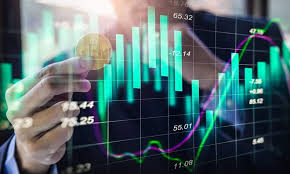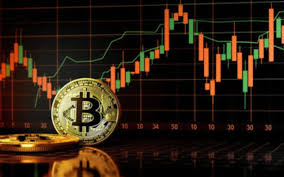
Understanding Trading Crypto Volume: A Comprehensive Guide
In the fast-paced world of cryptocurrency trading, one metric stands out as vital for traders and investors alike—trading crypto volume. Trading Crypto Volume https://www.newsvoir.com/index.php?option=com_content&view=catnews&catid=168&Itemid=37&page=81 provides insights into this metric that can significantly impact trading decisions. In this article, we’ll explore what trading volume is, why it matters, and how you can effectively utilize it for your trading strategies.
What is Trading Volume?
Trading volume refers to the total number of assets traded within a specific time frame. In cryptocurrency markets, this can be measured in various ways, including the number of coins, tokens, or contracts exchanged. It is an essential indicator of market activity, giving traders insights into the demand and supply dynamics of a specific cryptocurrency. Unlike traditional markets, crypto markets can witness significant fluctuations in volume, reflecting various market sentiments.
Why Trading Volume Matters
Trading volume plays a crucial role in assessing market strength and price movements. High volume often indicates strong interest in a particular asset, making it more likely for the trend to continue. Conversely, low volume can signal a lack of interest or uncertainty, potentially leading to price stagnation or reversal. Understanding these dynamics allows traders to make informed decisions, aligning their strategies with market trends.
Market Sentiment
Volume can be a powerful indicator of market sentiment. For instance, a sudden increase in volume often coincides with market news, announcements, or significant price movements, suggesting a shift in sentiment among traders. Conversely, a decrease in volume may indicate skepticism or a lack of new information. Utilizing volume analysis helps traders gauge whether to enter, hold, or exit positions based on prevailing market sentiment.
Identifying Trends
Volume can also assist traders in identifying potential trends. When price movements are accompanied by increasing trading volume, it signals strength and validates the trend. On the other hand, a price increase coupled with declining volume may imply a weak trend and signal caution. By analyzing volume alongside price actions, traders can create more robust trading strategies that align with market movements.

How to Analyze Trading Volume
Analyzing trading volume involves interpreting the data effectively to draw insights that guide your trading strategies. Here are a few methods to consider:
Volume Charts
Most trading platforms offer volume charts that display the volume for a specific cryptocurrency over time. Traders can customize these charts to observe volume spikes, trends, or patterns that may influence their trading decisions.
Volume Indicators
Several technical indicators incorporate volume data, helping traders to understand the relationship between price movements and trading activity. One such indicator is the On-Balance Volume (OBV), which uses volume flow to predict price changes. Additionally, the Volume Weighted Average Price (VWAP) is another metric that provides insights into the average price at which an asset has traded throughout the day, factoring in volume.
Volume and Price Patterns
Understanding how volume interacts with price patterns is fundamental for effective trading. For instance, during a breakout, high volume can indicate that the price will continue to rise, reinforcing the breakout’s legitimacy. In contrast, a breakout on low volume may suggest that the move lacks conviction and could potentially reverse.
Volume in Different Market Conditions
Different market conditions can dramatically affect trading volume. In bullish markets, volume tends to increase as more traders enter the market, driven by optimism. Conversely, in bearish markets, volume may drop as traders become cautious or exit positions. Understanding these dynamics can aid traders in adjusting their strategies based on market conditions.

Institutional Influence
The presence of institutional investors can also significantly impact trading volume. High-frequency trading and institutional operations can lead to increased trading volume, often accompanied by rapid fluctuations in price. Retail traders should be aware of institutional movements and how they can affect overall market dynamics, leveraging volume analysis to navigate these changes effectively.
Practical Strategies for Utilizing Trading Volume
Implementing effective strategies that account for trading volume can enhance your trading outcomes. Here are some practical tips:
Volume Confirmation
Always seek volume confirmation when executing trades. For instance, if you’re considering entering a long position, ensure that the price is increasing alongside rising volume. This confirmation can provide confidence in the trade and reduce the risk of false signals.
Volume Divergence
Be on the lookout for volume divergence, where the price continues in one direction while volume trends in the opposite direction. This divergence can indicate an impending reversal, providing an opportunity for traders to capitalize on market misalignments.
Conclusion
Trading crypto volume is a fundamental aspect of trading that should never be overlooked. By understanding and analyzing volume dynamics, traders can develop more effective trading strategies that align with market movements and sentiment. Always stay informed about market trends and use volume analysis to enhance your decision-making in the ever-changing landscape of cryptocurrency trading.